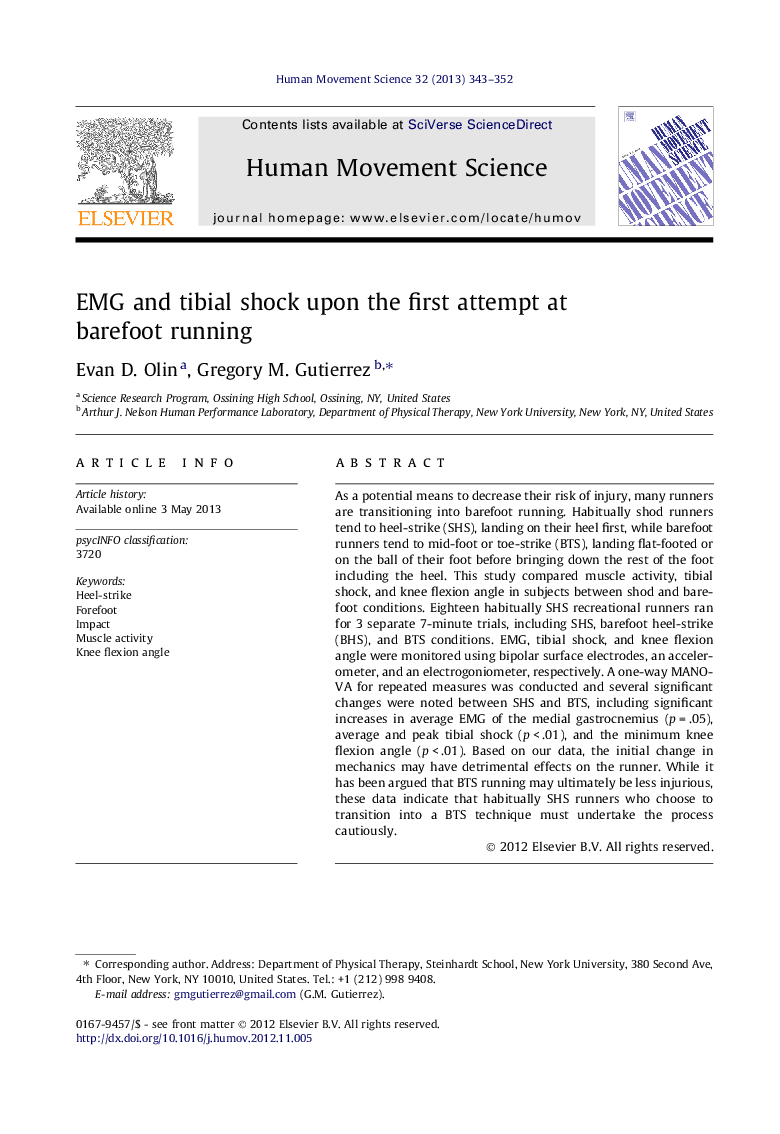| کد مقاله | کد نشریه | سال انتشار | مقاله انگلیسی | نسخه تمام متن |
|---|---|---|---|---|
| 928433 | 922366 | 2013 | 10 صفحه PDF | دانلود رایگان |

As a potential means to decrease their risk of injury, many runners are transitioning into barefoot running. Habitually shod runners tend to heel-strike (SHS), landing on their heel first, while barefoot runners tend to mid-foot or toe-strike (BTS), landing flat-footed or on the ball of their foot before bringing down the rest of the foot including the heel. This study compared muscle activity, tibial shock, and knee flexion angle in subjects between shod and barefoot conditions. Eighteen habitually SHS recreational runners ran for 3 separate 7-minute trials, including SHS, barefoot heel-strike (BHS), and BTS conditions. EMG, tibial shock, and knee flexion angle were monitored using bipolar surface electrodes, an accelerometer, and an electrogoniometer, respectively. A one-way MANOVA for repeated measures was conducted and several significant changes were noted between SHS and BTS, including significant increases in average EMG of the medial gastrocnemius (p = .05), average and peak tibial shock (p < .01), and the minimum knee flexion angle (p < .01). Based on our data, the initial change in mechanics may have detrimental effects on the runner. While it has been argued that BTS running may ultimately be less injurious, these data indicate that habitually SHS runners who choose to transition into a BTS technique must undertake the process cautiously.
► Barefoot, toe strike (BTS) running is increasing in popularity due to a proposed reduction in injury risk.
► Although many runners are changing their running style, the transition from shod, heel strike (SHS) to BTS running has yet to be evaluated.
► Habitual SHS runners were evaluated during their first attempt at BTS running in terms of tibial shock, EMG, and knee flexion angle.
► We found increased tibial shock and EMG in the barefoot relative to the shod conditions.
► Our data indicate that SHS runners who wish to transition into BTS running should undertake the process slowly and cautiously, as the drastic change in mechanics may pose additional injury risk during the transition phase.
Journal: Human Movement Science - Volume 32, Issue 2, April 2013, Pages 343–352